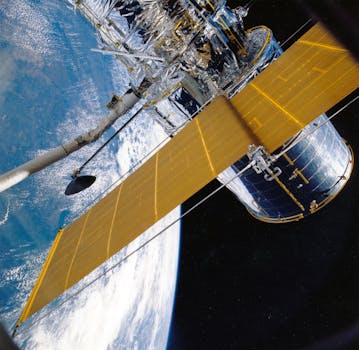
Beyond Earth: How Recent Advances Are Shaping Satellite Telecommunications
Beyond Earth: How Recent Advances Are Shaping Satellite Telecommunications is an exciting topic that has been gaining significant attention in recent years. The rapid evolution of space technology has opened up new avenues for satellite telecommunications, enabling faster, more reliable, and more secure communication systems. In this article, we will delve into the latest developments and innovations in satellite telecommunications, exploring how they are transforming the way we communicate beyond Earth.
Introduction to Satellite Telecommunications
Satellite telecommunications have been around for several decades, with the first commercial satellite, Intelsat 1, launched in 1965. Since then, satellite technology has come a long way, with significant advances in areas such as satellite design, launch systems, and communication protocols. Today, satellite telecommunications play a critical role in global communication systems, providing connectivity to remote and underserved areas, supporting emergency response and disaster relief efforts, and enabling global navigation and positioning systems.
The recent advances in satellite telecommunications can be attributed to several factors, including the development of new satellite constellations, advancements in antenna technology, and the increasing use of artificial intelligence and machine learning in satellite systems. These developments have enabled the creation of more efficient, secure, and reliable satellite communication systems, which are transforming the way we communicate beyond Earth.
Advances in Satellite Technology
One of the significant advances in satellite technology is the development of new satellite constellations, such as OneWeb and Starlink. These constellations consist of hundreds or thousands of small satellites that work together to provide global coverage, enabling faster and more reliable communication systems. The use of small satellites has reduced the cost of launching and operating satellite systems, making them more accessible to a wider range of users.
Another area of advancement is antenna technology, with the development of more efficient and compact antennas that can be used in a variety of applications, from satellite communications to 5G networks. The use of phased array antennas, for example, has enabled the creation of more secure and reliable satellite communication systems, with improved resistance to interference and jamming.
The increasing use of artificial intelligence and machine learning in satellite systems is also transforming the way we communicate beyond Earth. AI and ML algorithms can be used to optimize satellite communication systems, predict and prevent errors, and improve the overall efficiency and reliability of satellite networks. The use of AI and ML has also enabled the development of more autonomous satellite systems, which can operate independently with minimal human intervention.
Impact of Recent Advances on Satellite Telecommunications
The recent advances in satellite telecommunications are having a significant impact on the way we communicate beyond Earth. The development of new satellite constellations, advancements in antenna technology, and the increasing use of AI and ML in satellite systems are enabling faster, more reliable, and more secure communication systems.
The impact of these advances can be seen in a variety of areas, from remote and underserved communities to emergency response and disaster relief efforts. Satellite telecommunications are providing connectivity to areas where traditional communication systems are not available, enabling people to stay in touch with family and friends, access essential services, and receive critical information during emergencies.
The recent advances in satellite telecommunications are also enabling new applications and services, such as global navigation and positioning systems, satellite-based internet services, and remote sensing and Earth observation systems. These applications and services are transforming the way we live and work, enabling new opportunities for economic growth, social development, and environmental sustainability.
Conclusion
In conclusion, the recent advances in satellite telecommunications are shaping the future of communication beyond Earth. The development of new satellite constellations, advancements in antenna technology, and the increasing use of AI and ML in satellite systems are enabling faster, more reliable, and more secure communication systems. As satellite technology continues to evolve, we can expect to see new applications and services emerge, transforming the way we communicate and interact with each other beyond Earth.





